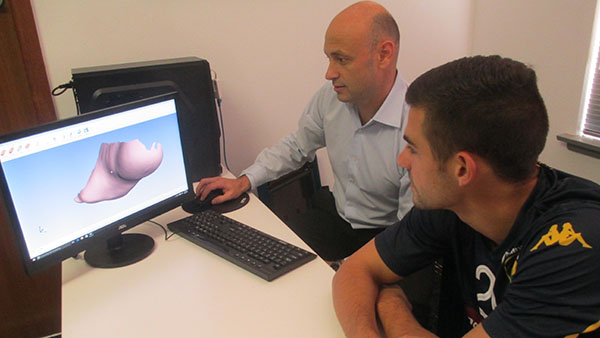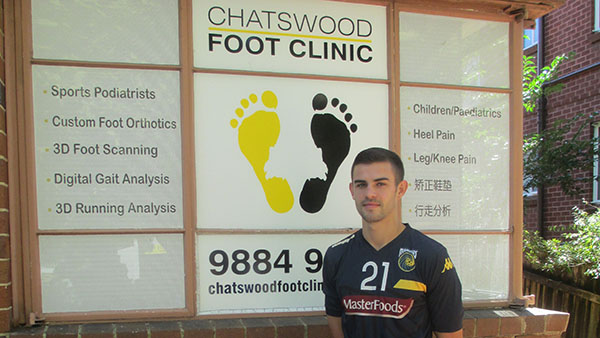There are many people who work hard behind the scenes at the Central Coast Mariners and Matt Percy is one of them! Let’s hear from our long serving podiatrist about his work with the Yellow & Navy.
There are many people who work hard behind the scenes at the Central Coast Mariners and Matt Percy is one of them! Let’s hear from our long serving podiatrist about his work with the Yellow & Navy.
CCM: How long have you worked with the Mariners?
MP: I have been the consultant sports podiatrist for the Central Coast Mariners for 11 years. The journey began with the inception of club in the Hyundai A-League back in 2005.

CCM: Were you involved with football before the Mariners?
MP: Prior to my start at the Mariners I was always involved with elite football. Working with NSWIS soccer academy at Valentine Sports Park and Blacktown City soccer club for five years (2000-2005). I also worked with English premier league side West Ham United from 1999 – 2000. I enjoyed working with the 1st team squad and also the West Ham academy sides.
CCM: What other experience do you have with elite football?
MP: During the preparations for the 2014 FIFA World Cup in Brazil I was the consultant sports podiatrist for the Socceroos. It was good catching up with some old Mariners boys in the green and gold.
CCM: What role does a sports podiatrist play for a professional football team?
MP: My main role at the Mariners is to help prevent and manage the incidence of non-contact injuries (NCIs) and improve biomechanical function for performance. I visit the Central Coast Mariners Centre of Excellence every few weeks to assess and treat the players. If they require a more detailed assessment they will come to my clinic at Chatswood.
CCM: What is a non-contact injury (NCI)?
MP: An NCI is an injury that occurs without obvious incident. An incident includes things like an impact from a tackle or an awkward landing. NCIs generally occur due to fatigue or excessive loading on a muscle, tendon or joint. In footballers these injuries tend to occur in the feet, legs, knees and pelvis.
CCM: How do you prevent them?
MP: To reduce risk of NCI at the Mariners we regularly test the players for muscle fatigue and overloading. This is done through regular muscle strength, flexibility and endurance testing, heart rate recovery monitoring and questionnaires. I am part of a team of people involved in this assessment process with Andrew Nealon the Head Physiotherapist being the central figure.
CCM: What do you do specifically?
MP: My specialised role is assessing each player’s biomechanical structure, movement, and running gait. I am looking for joint range of motion that is either excessive or restricted and then leading to inefficiencies. Any of these inefficiencies have the potential to reduce performance and also lead to chronic injuries through fatigue or excessive loading.
CCM: What happens if a player gets an NCI?
MP: When a player has an NCI the process is similar but more specific. It will first involve diagnosis of the injury and then undergoing a detailed biomechanical assessment and loading history to understand the cause. Depending on what the cause is treatment will involve a combination of load adjustment, strengthening, stretching and if required foot orthoses to improve foot and leg mechanics.
CCM: What are foot orthoses?
MP: Foot orthoses for professional footballers are very common. They are basically insoles with custom made arch supports that are implemented to treat injury, reduce the risk of injury or improve gait (running) efficiency. The foot orthoses I use for footballers are specifically made for football boots and football. In the early days of the Mariners we did a lot of trials and research in designing orthoses specifically for footballers. They can still be worn in other shoes and for other activities but are designed specifically for football.
CCM: What are the most common injuries you treat in footballers?
MP: I would probably have to break the down into age brackets: in children it would be Sever’s disease (heel pain), in young adults shin splints and sesamoiditis (pain under big toe joint), and in the over 35s plantarfasciopathy , achilles tendonopathy and calf muscle strains.






